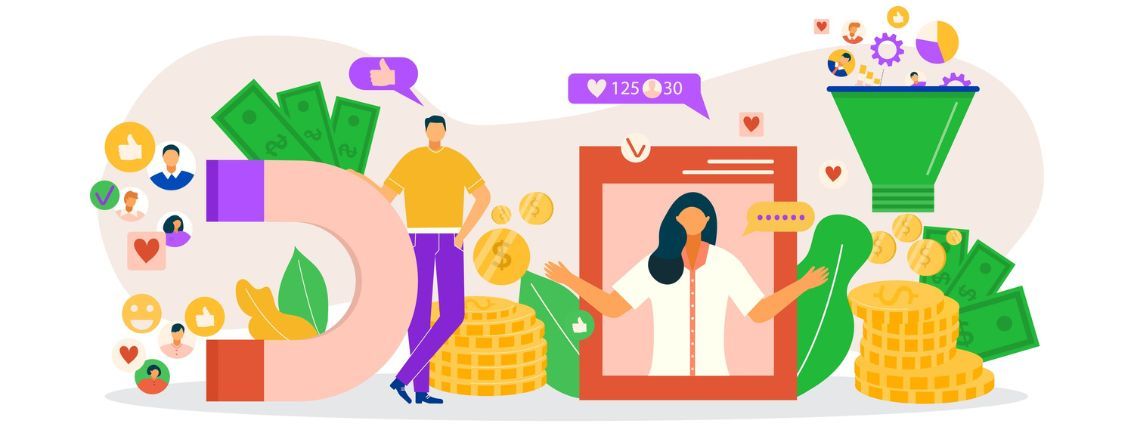For all the attention, time, and money you spend in building your website and creating a loyal following from it, you can exponentially expand your earning potential by learning how to get good at monetizing websites.
We’ll show you 15 proven effective ways.
Once you master the tactics for one website, you can then replicate these techniques by building more websites and earning more. Usually, a combination of two to three tactics will do, but it helps to know all the different ways you can monetize sites.
Read on to learn more about what these techniques are, starting with the obvious and moving on to other, more expanded ways of monetizing your websites.
But, first, the basics.
What Does It Mean To Monetize A Website?
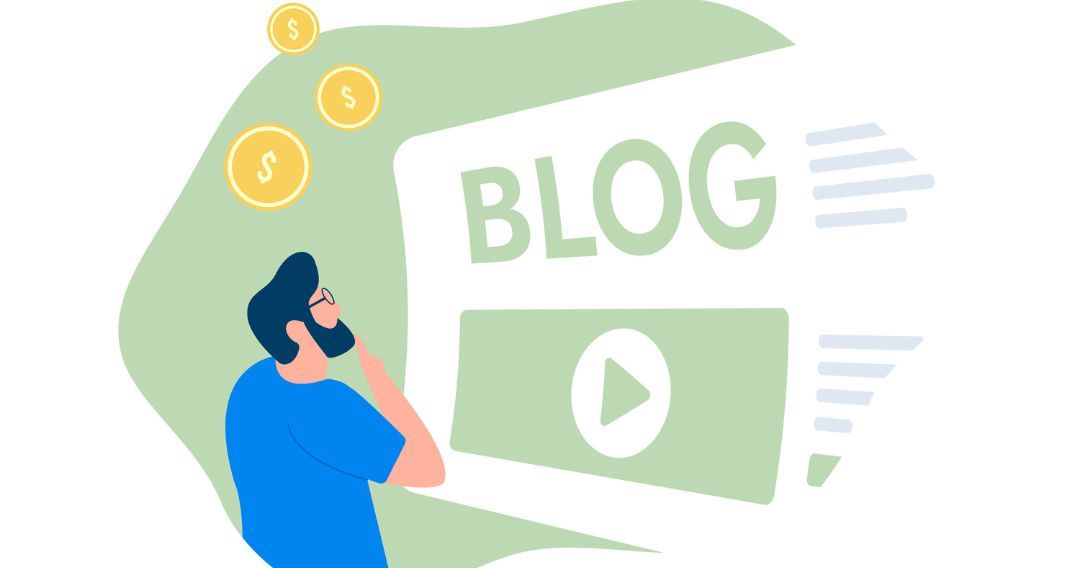
Simply put, monetizing a website is making your website make money for you. When you do this successfully, you can earn both active and passive income for life.
However, before you get lost in all the ins and outs and the tips, tricks, and techniques of website monetization, there are two essential principles to observe all throughout.
How Can I Monetize My Website?
Practice these two (2) essential principles to successfully monetize your website.
These principles are best expressed in what successful American businessman and digital marketing and social media guru Gary Vaynerchuk is often quoted on,
“Content is king, but marketing is queen, and the queen runs the household.”
Monetizing Websites: Content is King
A website gains and grows in following when it provides meaningful value to its target audiences. This value is mainly based on the quality of content that a website delivers.
In the world of the internet and information overwhelm, content that shines is content that is both interesting and useful to its target audiences.
Content must fill real human needs and address persistent human problems in ways that attract, effectively communicate with, and engage the website’s visitors.
Valuable content is content that resonates with its audiences. If visitors find your website content valuable, they will keep coming back and even refer your site to others, so more and more people visit your site. An AI article writer tool can be a powerful tool to create high-quality content quickly and with less effort.
For example, websites that earn from ad revenues are sites that have huge monthly page views. Websites with at least 500K monthly page views earn between $1,000 to $5,000 a month, while those with at least a million monthly page views earn between $2,500 to $25,000 a month. Websites with more than 40 million page views earn from $100,000 to $2,000,000 a month.
Monetizing Websites: Marketing is Queen
However, putting out information on goods and services you or other businesses sell or providing people with solid, well-researched, and meaningful information that helps them is only half of the equation for successfully monetizing websites.
You must have a clear marketing strategy to reach the right audiences who will benefit from what you have to offer. One way to achieve this is partnering with a specialized agency for B2B marketing, which can help you identify and target your ideal audience, ultimately leading to increased conversions and business growth.
You must also have the commitment and the right resources to carry the strategy out in successful implementation. In terms of time, you must be prepared to invest from at least six months to two years to pivot to effective website monetization.
Additionally, you must have the openness, patience, and growth mindset to learn from the process and to keep fine-tuning your strategy.
Website monetization is not simply creating a website, putting in whatever content you like, and then sitting back and watching the money flow in.
Monetizing your website requires a clear vision, goals, and plan, a deep understanding of your target audience, and using the right tools to attract and keep engaging them.
Assuming you’ve got these basic principles covered, here are now the 15 different ways you can monetize your website. The first six (6) focus on monetizing content and the rest focus on marketing techniques such as ad revenue generation and other business tactics.
15 Proven Tactics To Monetize Your Website

1. Create and sell your own products.
You can create products related to your website’s niche and sell them on your site.
For example, Into The Gloss started out as a blog on makeup and beauty by Emily Weiss in 2011. Later, as she gained a substantial following, she created her own makeup and beauty products to sell through her blog. This strategy eventually turned into what is known as Glossier, a beauty brand, and company Weiss set up in 2014. Four years later, it became a billion-dollar business.
You can also open an ecommerce store connected to your website where you sell physical products you create yourself. Otherwise, you can enlist a third party to manufacture them for you, especially when you are selling food and beverage, construction-based materials, or print-on-demand products. With ecommerce shopping platforms like Shopify and WooCommerce, it’s easier to set up an online store. These platforms already provide the ready and integrated business tools you need to sell your products from the get-go.
Aside from physical products, you can also sell easily downloadable digital products like ebooks, audiobooks, digital art, photo presets, or health and nutrition plans. This is recommended, especially if you’ve become a recognized expert in a particular subject or field. You can check tools like Kajabi and other similar platforms to sell your digital products.
For example, Mridu Khullar Relph, founder of The International Freelancer, monetized her decades of journalism and content marketing experience into a series of ebooks now sold on her website as well as on Amazon and other leading bookstores.
2. Set up a drop-shipping store.
If you’d rather not create your own products or hire a manufacturer to create them for you, you can also set up a drop-shipping store connected to your website.
Drop-shipping is when you sell goods on your website that you do not keep in stock. Instead, you just focus on selling them. When somebody orders from your drop-shipping store, you send the order to another company that manufactures them, which then ships the goods directly to the buyer.
There are now several trusted drop-shipping platforms worldwide, such as Magento and BigCommerce, aside from Shopify and WooCommerce, that connect drop-shippers to suppliers and products with all the necessary tools to run their businesses. You don’t have to worry about inventory management, order fulfillment, and shipping anymore.
If you do it right, you can monetize your site and earn a starting average of around $1,000 to $5,000 a month. If you later get tired of running your drop-shipping store, you can also sell it for 20 to 30 times your average monthly revenue.
3. Use push notification ads.

Push notification ads are a new breed of advertising that doesn’t look like traditional ads. Since they appear on users’ desktops or mobile devices as notifications or pop-up messages, they look more like native ads.
Push ads are also consent-based, so only users who allow them get to see them. They won’t annoy users who haven’t allowed them on their devices.
Using data from over 1,000 leading online publishers and brands who are part of the Subscribers Ad Network, it’s been found that almost half (46%) of users allow push ads on their devices. This represents potential passive income for you if almost half of your own website visitors also allow these push ads on their devices.
In fact, push ads have become the highest-demanded inventory from advertisers because of the high level of engagement with loyal push users.
Subscribers’ machine learning technology ensures that your website’s subscribers get the most relevant ads based on their past visit behavior at your site.
Subscribers has also partnered with the largest ads providers. This means you’ll never run out of ads, and you can monetize 100% of your website ad space inventory at competitive rates.
Sign up to monetize your site with the Subscribers Ad Network here.
4. Monetize your expertise.
If you’re a freelancer, you can create a portfolio website to promote your skills and professional services online. A portfolio website can help you:
- Look more professional and credible
- Package your services
- Charge higher rates
- Be more selective with the projects you take on
- Work less and make more
As of 2023, there are already around 1.57 billion freelancers in the world. The worldwide freelance market is estimated to be currently worth $1.5 trillion, growing at 15% a year. Sixty-five percent (65%) of freelancers make more money than they would in regular employment. Depending on the field of expertise, freelancers make from $40,000 to $1 million a year.
5. Set up online courses/coaching services.
In addition to selling your professional services and expertise, you can further monetize your website by adding online courses and/or coaching services. These can generate recurring revenue for you.
For example, if a visitor participates in a tutorial or course or registers for a live or recorded webinar for a fee, you earn. You only produce the tutorial, course, or webinar once, but you can earn evergreen income from them for as long as they remain relevant to your target audience. What is more, creating and selling a course is a breeze, provided you have the right tools.
In the United States, personal life coaching often costs between $75 to $200 per hour. Packages of four half-hour sessions can cost $300 a month, while programs with eight 90-minute sessions can cost up to $2,000. Executive coaching can cost from $13,000 to $30,000 for a six-month engagement, with the average hourly rate at $350.
In 2023, the most lucrative coaching niches are in Life and Mindset, Wellness, Career Transition, High Performance, and Small Business Coaching.
You already know what you know and have gained the experience and expertise you have. Why not leverage them further by monetizing your website with these offers?
The world needs what only you can bring in your own unique way.
6. Create a premium certification program.

This tactic takes your expertise to a higher level. If you’re a well-established authority in your industry or niche, and you have a strong brand, you can create and sell advanced certification training programs or e-learning courses.
Former associate editor of Copyblogger who helped build Copyblogger into what it is today, Jon Morrow, built his own site in 2012, Smartblogger, which is dedicated to writing and blogging.
Despite his inability to move anything in his body except for his face due to Spinal Muscular Atrophy, Morrow did not let it stop him. Instead, he parlayed his mind and technology, using a microphone and speech recognition software, to become one of the top online writers in the world today, as well as a founder and leader of multiple successful companies.
Morrow not only blogged about writing and blogging but also developed certifications and other courses for people who want to become successful and well-paid online writers like himself. Today, Smartblogger has over four million readers and 300,000 subscribers, making it one of the largest sites in the world dedicated to writing and blogging.
“Multipassionate entrepreneur” Marie Forleo, who coined the term herself and made it into a bestselling book, used her life story and seemingly disconnected experiences to create a digital education company from the courses she created and developed.
From working in the New York Stock Exchange and Condé Nast publishing to choreographing hip-hop on MTV and being one of the world’s first Nike Elite Dance Athletes, Forleo used all she had. She wrote about her experiences and lessons learned.
Her books landed on the New York Times bestseller list. She also created online training programs like B-School and shows like MarieTV. One of her bestselling courses, “Create A Business And Life You Love,” is a product of all these. She now has audiences in 195 countries.
7. Charge for your content.
If you have a niche blog or website with many dedicated readers, and you don’t want to put ads on your site, you can ask your readers to pay for the content you provide. It can be a one-time fee to access your premium content or a recurring fee.
Typically, website owners who do this provide a mix of free and paid content and develop a close-knit community among their followers. The free content serves as the come-on for visitors. Once the visitors are hooked as loyal readers, they are invited to access more exclusive premium content using paywalls. This is what news publishers do for their longer, deeper, and more researched articles.
For example, The Economist (Espresso) has been running a paid email newsletter since 2014. Since it still exists today, it would be safe to say that its content monetization strategy has been paying off well.
You can also use your website as a launching pad for new software, such as an app or plugin. You can survey your readers for everyday problems they face that an app or plugin can solve. Then, develop and test the app or plugin and sell it on your site.
8. Ask for donations.
If you don’t want your readers to pay for your content at set rates, you can also ask for donations to support your website so they’re not bothered by ads.
This tactic is particularly effective with super niche sites that have dedicated audiences. Artists, comics writers, pro gamers, and other creative types with websites will have avid fans willing to donate to support their favorite site. Include a link to the donation page on your digital business card so that people in your network can easily donate.
For example, Maria Popova, the author of Brain Pickings (now The Marginalian), has supported her free and ad-free site mainly through her readers’ loyal patronage. She provides two options for donations: one-off donations at any amount or recurring sponsorships with monthly rates from $3 to $25.
9. Make your website a subscription-based membership site.
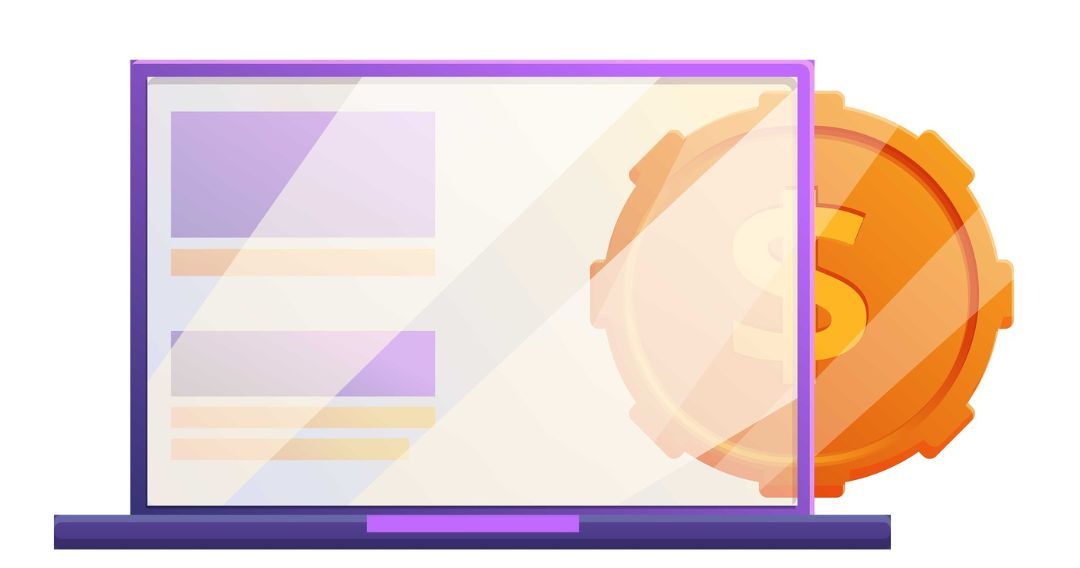
You can set up a private themed area on your website, fill it with extra value for your audience, and turn it into a members-only, subscription-based portion of your site. This website monetization model is commonly found among niche blogs and news websites.
Membership sites typically take on three forms:
- Education buffets sell access to a bundle of courses, podcasts, webinars, and other educational resources. An example is Game Arts Academy, which offers membership plans for game artists with its own private Discord community, weekly pro feedback, classes, and live boot camps.
- Mastermind and accountability groups organize group coaching and mastermind sessions with a small and closely-knit group of participants. A mastermind group is a peer-to-peer mentoring group to help members solve their problems, while an accountability group is a group of 3 to 7 people who want to achieve specific goals by holding each other accountable.
Examples of accountability groups are the Writing Accountability Groups (WAG) at the University of Pittsburgh’s Writing Institute and The Entrepreneurs Accountability Group in the United Kingdom.
One of the most famous mastermind groups was The Inklings, an authors’ group at the University of Oxford with members like C.S. Lewis and J.R.R. Tolkien. Top mastermind groups for entrepreneurs include the GrowthMentor Mastermind Groups and Entrepreneur’s Organization (EO).
Mastermind group membership costs from $500 to $100,000 annually, while accountability group membership costs less.
- Paid communities showcase discussion boards, private forums, a members’ directory, masterminds, exclusive discounts, and more privileges. An example is Traffic Think Tank, a paid online community for best search engine optimization (SEO) practices and learning from masterminds with monthly and yearly membership options.
Another example is veteran freelance writer Carol Tice, who monetizes her vast network and her website, Freelance Writers’ Den, with a members-only paid job board and referral group. It’s also an online community for freelance writers to learn how to grow their writing income fast.
10. Be an affiliate marketer.
If you have an interest in and a talent for reviewing or promoting products, and your website has an active user base who listens to your opinions, you can be an affiliate marketer to monetize your website.
Affiliate marketing is an arrangement where you earn commissions by promoting products and services made by another person or company. There are tons of helpful affiliate marketing courses that can help you level up your skills in this field.
As of 2023, 80% of brands have affiliate programs, so you can sign up to be an affiliate of the brands that interest you most. You can also join affiliate marketplaces such as ClickBank and choose products or services that complement your niche brand.
Blog and review sites are the leading channels for affiliate marketing. Amazon Associates is a popular platform for affiliate marketing where you sign up, recommend products to your audience, and earn as much as 10% in commissions from qualifying purchases and programs.
Affiliate marketing works through a six-step process:
- You sign up for an affiliate program with a merchant brand.
- You generate a unique link that you use on your website whenever you mention the merchant’s products.
- When your website visitors click on this unique link, they are sent to the merchant’s store website.
- Your website visitors purchase items from the merchant’s store.
- The affiliate network records the purchase, and the merchant confirms it as a valid sale.
- The sale is credited to you, and you collect your commission.
Websites such as The New York Times Wirecutter, which independently reviews products to “help people buy the right things for the way they want to live,” is one successful example of monetizing websites through affiliate marketing.
At the Wirecutter, experts research, test, and review hundreds of products across different categories in real-life scenarios to recommend the best option. The categories span Home and Garden, Kitchen, Health and Leisure, Tech, Baby and Kid, Style, Gifts, Shopping, and Deals.
Another type of affiliate marketing is to offer coupons from retail brands you’ve partnered with on your website. You can contact retailers within your vicinity for deals you can help promote, or you can also post coupons from affiliate networks you have signed up with.
Many people look for discounts when they shop, so you can monetize your website and earn money by giving this to them. You can even create a website solely dedicated to offering coupons for specific product lines and use this monetization technique as your main tactic.
11. Publish sponsored content.
Sponsored content creation helps drive more traffic to your website, even as it brings you extra money from it.
Basically, in sponsored content, a brand pays you to advertise something on your website. Typically, this takes the form of event coverage, paid reviews, product launches, sale announcements, and special offers.
Sponsored content is also known as native content, which is any type of brand-sponsored content that is commissioned or paid to look and feel like a natural piece of the publisher’s website.
Sponsored content is a form of advertising, but it doesn’t look, sound, or feel like one. Often, it comes as long-form pieces of content such as articles, case studies, or videos that are created to be informative and engaging for target audiences while mentioning and linking to the sponsor.
For example, Netflix partnered with The Wall Street Journal (TWSJ) to promote their television show, “Narcos,” by providing an in-depth article about the details of the multi-billion-dollar global drug trade. The article was informative, engaging, and interactive, benefiting the advertiser (Netflix), the publisher (TWSJ), and the publishers’ readers.
To monetize your website using sponsored content, you seek out and negotiate sponsorship deals with brands related to your website. You can charge for:
- Publishing a post on a relevant topic with a link to the sponsor’s website (also known as advertorial)
- Review one of the sponsor’s products in your article (known as sponsored reviews)
- Include the sponsor’s content in your email newsletter (newsletter sponsorship)
- Promote the sponsor’s products on your social media.
Sponsored content articles cost from $250 to $1,500 and more for a single article. There are industry rules of thumb for charging for sponsored content, such as basing it on 4% of your following or $100 for every 1,000 followers.
However, it also depends on what type of influencer you and your website are, based on how large your following is. Shopify outlines these Instagram following ranges and sponsored content rates as a guide:
- Nano influencers (1,000 to 10,000 followers): $10 to $100 per post
- Micro-influencers (10,000 to 50,000 followers): $100 to $500 per post
- Mid-tier influencers (50,000 to 500,000 followers): $500 to $5,000 per post
- Macro influencers ((500,000 to 1,000,000 followers): $5,000 to $10,000 per post
- Mega influencers (more than 1,000,000 followers0: $10,000 and above per post
You should also factor in the direct and indirect costs of sponsorship, including production, promotion, and staff costs.
12. Engage in paid partnerships.
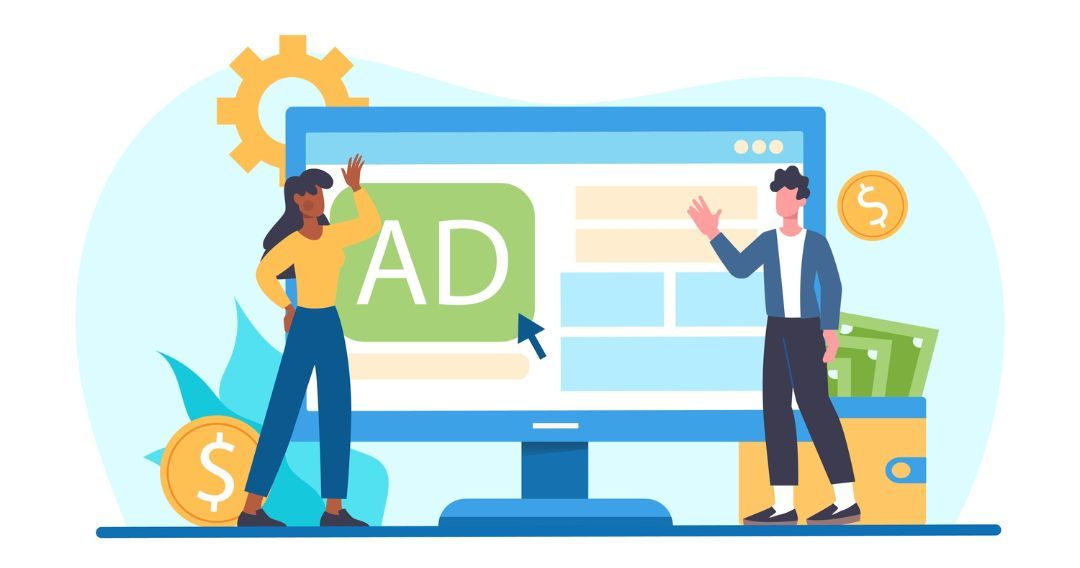
Paid partnerships are typically longer-term collaborations between you and brands that wish to be highlighted in front of your audience. You can highlight them in the form of sponsored content or events that your site offers.
In return, brands pay you in cash or in-kind (such as their products). These arrangements are also known as influencer marketing for brands.
Legally, the Federal Trade Commission (FTC) in the United States and the Advertising Standards Authority in the United Kingdom require website owners and publishers to disclose when they are showing content based on these paid partnership arrangements. Your audiences must know that content from these collaborations is not impartial.
For example, The Financial Diet (TFD), a blog for women to talk about money, partners with Credit Repair. It discloses this arrangement to its readers in its credit repair-related posts, such as its case studies of three TFD readers who overcame their biggest financial setbacks.
13. Let Google AdSense work for you.
One of the most popular ways to monetize websites has been to let Google place ads on your site. When someone clicks on those ads, you get paid based on a Cost-Per-Click (CPC) or Cost-Per-Mille/Thousand (CPM) payment system. This is Google’s AdSense advertising model, which earned $224.47 billion in 2022, with more than $10 billion of revenue distributed to publishers annually.
The most common form of ad placement is based on CPC. The better the publisher’s click-through rate (CTR), the more the publisher can earn. As of 2022, the average CPC for ads is $2.32, but industries such as consumer services, finance and insurance, legal, online education, and tech have significantly higher CPC rates.
In the CPM system, publishers are paid based on the number of impressions per thousand visitors. The more page views a publisher gets, the more revenue the publisher earns from Google AdSense.
To monetize your site using Google AdSense, you:
- Set up your account with Google AdSense
- Verify your account
- Have your website approved by Google
- Put the code Google gives you on your website
- Start passively earning income.
Ads are then served to match your website audience’s interests for higher engagement. If you provide content in areas that attract higher bids on ad placements, you can earn more revenue.
Google takes 32% upfront for serving the ads, with the 68% distributed among the website owners and publishers on which the ads were placed.
You can estimate the potential payments you will earn by using Google AdSense’s revenue calculator. However, although Google doesn’t require a minimum number of page views a month, the calculator only computes estimated earnings based on at least 50,000 visitors monthly.
Aside from the CTR and content quality, average payouts also depend on other factors such as:
- Ad units and sizes
- Number of ads per page
- Organic traffic generated
You need to earn at least $100 before Google AdSense will release payments to you. Given its 21-day processing period, if you meet the $100 threshold this month, you’ll likely receive your Google AdSense payouts at the end of next month.
In 2023, although Google AdSense is still a viable option for monetizing websites, competition from more ad networks and the shift towards Cost-Per-Action/Acquisition (CPA) models has made it less profitable than it once was. Also, the rates advertisers pay, and the amount of money publishers can earn are limited. Many other ad networks and ad exchanges pay better rates to publishers.
Essentially, Google AdSense may be an easy way to add some dollars to your website’s income stream, but it requires you to be highly successful at generating traffic. For example, if you have a website with good quality content that attracts around 2.5 million visitors a year in organic traffic, based on Google AdSense’s revenue calculator, you can potentially earn between $8,000 to $45,000 a year from Google AdSense.
This is why most publishers who use Google AdSense also diversify into other website monetization schemes, such as using affiliate marketing, selling ads directly to advertisers, or working with other ad networks.
14. Sell ad space directly to advertisers or through ad networks.
Google AdSense, like other ad networks, works as an intermediary between advertisers and publishers. You can opt to work directly with advertisers and keep all the ad earnings for yourself. Or, you can also choose to work with other ad networks that pay more to publishers.
If you have huge web traffic, you can use this as leverage to boost your negotiating power with advertisers. Working directly with advertisers also lets you decide where and how their ads appear on your website, and you can vary your pricing for each location. You also select whether you will use the Pay-Per-Click (PPC) model and charge by CPC or the Pay-Per-Visitor (PPV) model and charge by CPM.
If you opt to work directly with advertisers, you need to prepare a media kit detailing website statistics, relevant visibility online, ad requirements, and ad pricing. Then, you go to online platforms like LinkedIn and SellerCrowd to contact advertisers.
You can also visit other competitor websites in your niche and contact the brands that are already advertising there or scrape data from these sites using web scraping API or cURL proxy. You should also create a separate landing page for advertisers on your website, welcome interested advertisers there, and put your media kit there for their easy reference.
Aside from selling ad space directly to advertisers, you can also opt to go through other ad networks. These ad networks acquire available ad inventories from publishers like you and sell them to advertisers as packaged impressions. The Subscribers Ad Network is one of these, which is trusted by more than a thousand leading brands, media companies, and publishers.
With ad networks, you wouldn’t have to look for your own advertisers and negotiate separate deals with each individual advertiser.
15. Flip your website.

Flipping your website means building your website and making it grow in traffic and value. Then, you invite others to check out your website and bid on it. You then sell your website to the highest bidder.
You then move on to create and build more websites using your successful website monetization techniques and flip them again. On and on, it goes until you stop having fun doing it.
Website value and profitability depend on several key factors, such as:
- Website traffic
- Website’s monthly revenue expenses ratio
- Conversion rates
- Social media follower count
- Monetization model
- SEO metrics
- Value of the website’s domain name and niche
For a well-maintained and robustly growing website, you can expect to earn from 24 to 46 times your monthly revenue. Affiliate, membership, ecommerce, and drop-shipping sites typically command higher prices.
You can sell your website at business marketplaces like Empire Flippers and Flippa.
FAQs
How many views do you need to monetize a website?
Based on Cost-Per-Mille (CPM), you need at least 1,000 views to start monetizing your website. But, according to ad technology experts, you should be hitting 500,000 page views a month to start earning at least $1,000 per month from ad revenues.
How much money per 1,000 views?
In Google AdSense, you earn roughly $0.20 to $2.50 per 1,000 views, depending on your site’s content, your users’ location, time on your site, and devices used.
How long does it take to monetize a website?
Depending on your monetization model, you can start earning in three to six months, especially if you apply digital marketing and search engine optimization (SEO) techniques well.
Successfully Monetizing Websites
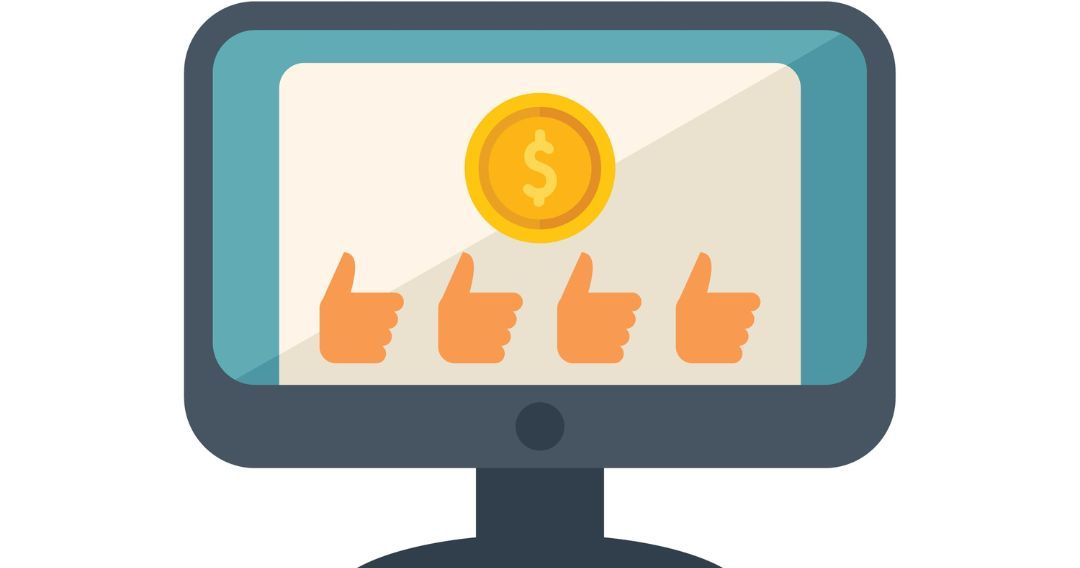
Developing a website is easy. Maintaining and monetizing a site takes a lot of unpaid hours before monetization starts working.
Doing it right often means:
- Powering through the initial challenges
- Identifying and building up your audience
- Publishing new quality content regularly
- Finding your target audience on social media
- Bringing them into your email subscribers’ list
- Optimizing your site for search engines
- Doing all these and more month after month
Still, in the end, if done right, website monetization pays off.
Financial Samurai, an investment banker turned professional blogger offering financial education in everyday language to everyday people, left his $750,000-a-year job to blog full-time. He did this after 10 years of consistently publishing three times a week and doing all the right things to monetize his website while working at his day job.
Michelle Gardner of Making Sense of Cents now consistently earns a 6-figure income every month and has earned over $5 million, with more than 20 million readers and 140,000 subscribers, since she started her blog in 2011.
The point is it takes time to build up readership, credibility, and traffic to monetize your website successfully. The 15 tactics discussed here are not get-rich-quick schemes. Rather, they are proven effective ways to maximize your website’s money-earning potential, given you’re already doing it right by practicing the essential principles of consistently providing quality and relevant content and applying strategic marketing.
With all the right stuff in place, combined with your openness to keep learning, your patience, and your growth mindset, you too can successfully monetize your website and even create more websites to monetize lucratively.
